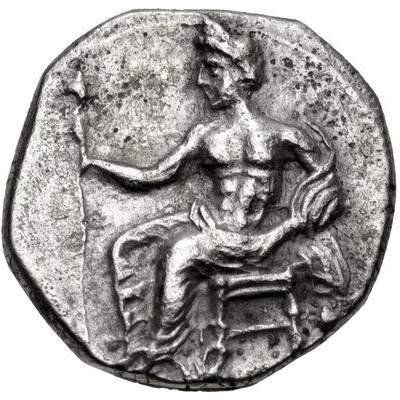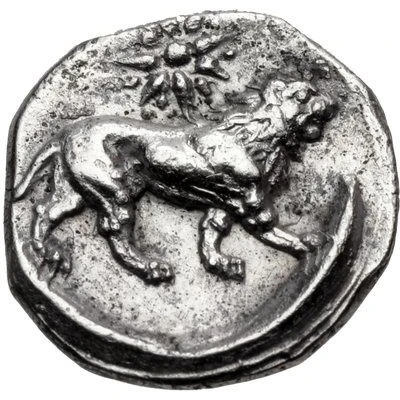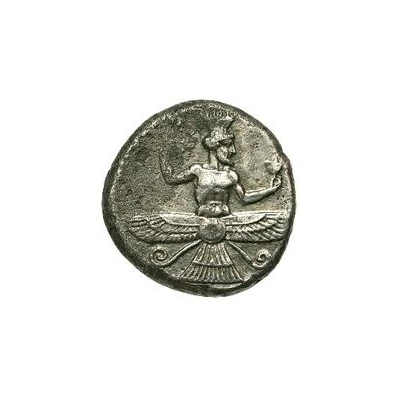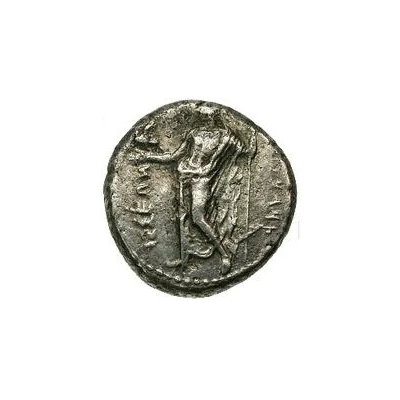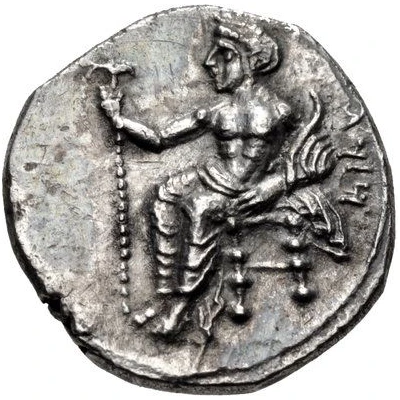
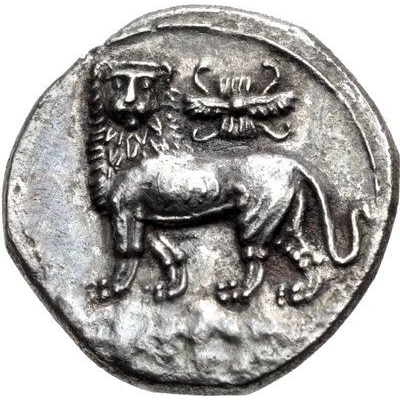

© Classical Numismatic Group, Inc.
Obol - Mazaeus 361 BC - 334 BC
| Silver | 0.82 g | 10 mm |
| Issuer | Satrapy of Cilicia (Achaemenid Satrapies) |
|---|---|
| Satrap | Mazaeus (Μαζαῖος) (361 BC - 331 BC) |
| Type | Standard circulation coin |
| Years | 361 BC - 334 BC |
| Value | Obol (⅙) |
| Currency | Drachm (550-330 BCE) |
| Composition | Silver |
| Weight | 0.82 g |
| Diameter | 10 mm |
| Shape | Round (irregular) |
| Technique | Hammered |
| Orientation | Variable alignment ↺ |
| Demonetized | Yes |
| Updated | 2024-10-10 |
| Numista | N#413566 |
|---|---|
| Rarity index | 97% |
Reverse
Lion walking left, head facing, on ground; above, winged solar disk with volutes.
Comment
Casabonne Series 5, Group B; Göktürk –; SNG France –; SNG Levante 190 (Myriandros).
The attribution of the walking-lion series of Mazaios had originally been given to the mint of Tarsos, but Newell argued that they more likely were struck at Myriandros in his study of that mint in AJN 53 (1919). Later, J.D. Bing, in AJN 1 (1989), argued for an alternative attribution of the Myriandros coinage to the mint of Issos. While most numismatic works continue to follow Newell, Casabonne’s significant study of Cilicia during the Persian period convincingly returns these coins of Mazaios to the mint of Tarsos (cf. Casabonne, pp. 215–7).
Interesting fact
One interesting fact about the Obol - Mazaeus coin is that it features an image of a lion, which was a symbol of the Achaemenid Empire, on one side, and an inscription in Aramaic on the other side, indicating the name of the satrap (governor) who issued the coin, Mazaeus. This coin was used as a form of currency in the Satrapy of Cilicia, which was a province of the Achaemenid Empire, and its design reflects the cultural and political influences of the time.
